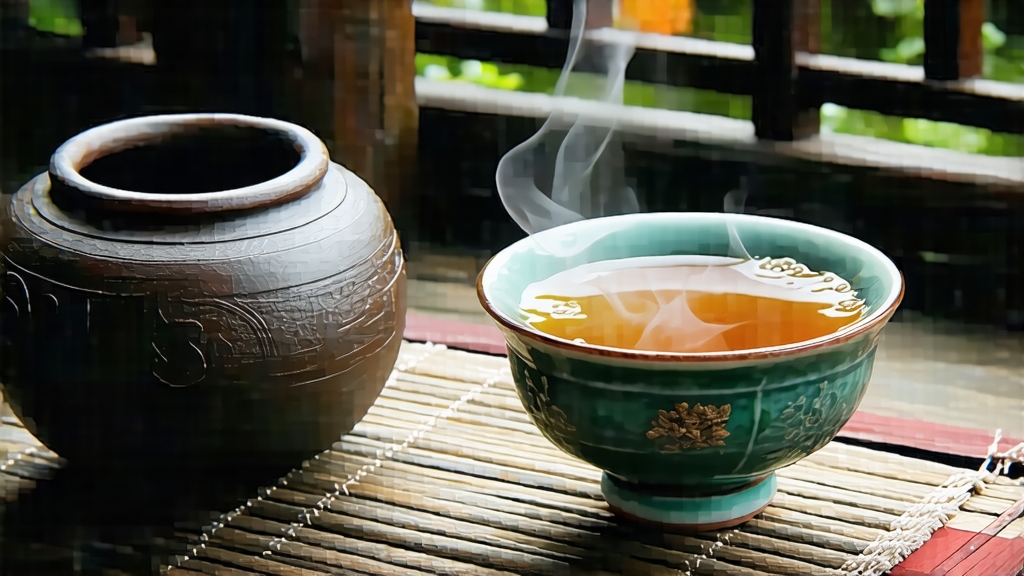
Tucked away in the humid, karst-pocked southwest of China, the small town of Liubao in Guangxi province guards a secret that once steered the course of empires. When the Qing court dispatched caravan after caravan of compressed dark bricks to the frontiers of Tibet and Mongolia, the leaf they chose was not the now-famous Pu-erh but its quieter cousin, Liu Bao. Traded along the Xunjiang River, then transferred to the Pearl River delta and finally hoisted onto the ancient Tea-Horse Road, Liu Bao became the currency that bought warhorses, the balm that soothed dairy-heavy diets, and the elixir that Mongolian lamas poured into silver bowls before chanting sutras beneath felt tents. For two centuries the imperial “Tea Office” stamped each hessian-wrapped basket with the Chinese character for “Liu Bao,” guaranteeing purity and provenance; today those faded chops still surface in Lhasa antique stalls, whispering of a time when a single basket could ransom a stallion.
Yet Liu Bao’s story begins even earlier, in the Ming dynasty, when local Yao and Han farmers discovered that the broad-leaf Camellia sinensis var. sinensis growing wild on the limestone slopes tolerated an extraordinary amount of post-fermentation without collapsing into mulch. They called the process “wet-piling” long before microbiology had a name for it, simply sensing that the tea wanted to breathe, to sweat, to remember the mountain fog in which it was born.
Varietals and Grades
Modern Liu Bao is classified first by picking standard and then by aging vessel. The top grade, “Special Flag,” consists of one bud with two leaves plucked before the Qingming festival; the liquor is almost burgundy, with a camphor-sweet nose reminiscent of old Chinese medicine shops. “First Grade” allows a slightly larger leaf, yielding a thicker body and the signature betel-nut finish that connoisseurs prize. Below that lie the workhorse grades—Second, Third, and Fourth—whose stronger stems and broader blades deliver the malty backbone beloved by Hong Kong dim-sum restaurants, where Liu Bao is still poured from battered kettles to cut through pork-fat richness.
After initial processing the tea is sorted into three aging ecosystems. Bamboo-basket Liu Bao breathes through narrow slats, absorbing hints of bamboo lactones and remaining relatively light; clay-jar Liu Bao enters unglazed Guangxi urns whose micropores nurture a slower, more anaerobic microbial community, deepening color to espresso black and adding notes of dried longan. The rarest, “cave-aged” Liu Bao, rests in the constant 18 °C, 85 % humidity of local karst caves, where airborne molds related to Penicillium roqueforti spin blue veining on the brick surface and gift the tea a blue-cheese pungency that divides even veteran cuppers.
Crafting the Darkness
Liu Bao production follows five immutable steps, each calibrated to the mountain weather report.
- Pluck & Wilt: Leaves are spread on bamboo trays set on stilted balconies so the canyon breeze can carry away grassy volatiles overnight.
- Kill-Green: A 260 °C wok roast lasting less than three minutes deactivates leaf enzymes while preserving the thick wax cuticle crucial for later microbial colonization.
- Rolling: A peculiar “foot-rolling” survives in three family workshops—bare feet press the hot leaves against rattan mats, bruising cells evenly without rupturing veins; the practice is hygienic because the moment the leaf temperature drops below 45 °C, rolling stops.
- Sun-Drying: Unlike Pu-erh’s shaded drying, Liu Bao demands direct subtropical sun; UV-B radiation triggers the formation of 6,8-C-glucosylapigenin, a flavone that later metabolizes into the tea’s cooling, minty aftertaste.
- Wet-Piling: The heart of Liu Bao identity. Five tons of sun-dried maocha are piled into a one-meter heap, sprayed with mountain spring water, and covered with jute sacks. Internal temperature is monitored like a hospital patient; when it hits 58 °C the pile is turned, a process repeated six to eight times over 25–35 days. The dominant microbe is Aspergillus niger, but metagenomic studies reveal a supporting cast of 127 fungal and 92 bacterial taxa, including